Trail Networks and Spines: Key Components As Congress Discusses America’s Mobility Future
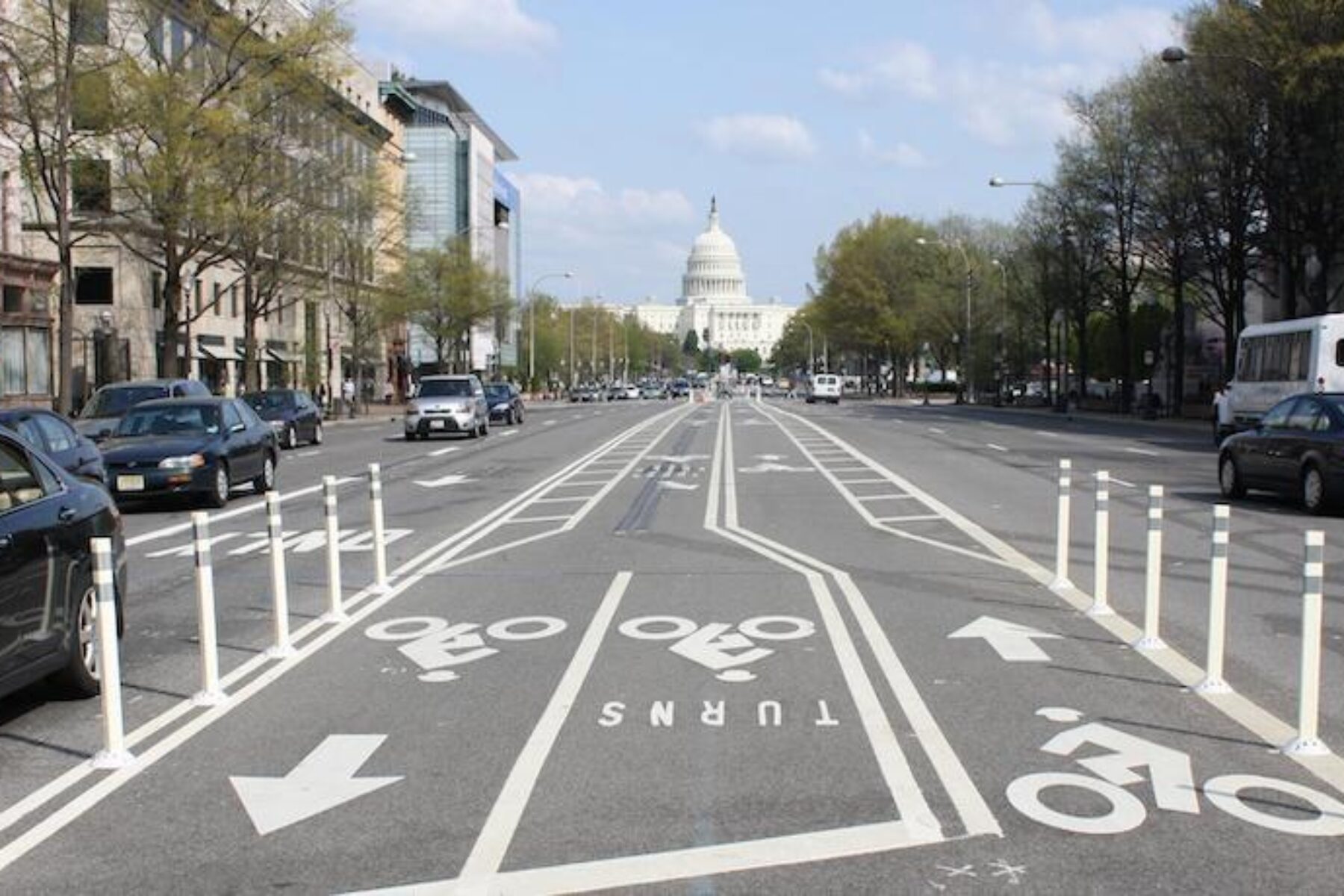
Yesterday, lawmakers on Capitol Hill held a hearing on what Congress can do to meet America’s 21st-century transportation needs. The responses ranged from addressing the role of autonomous vehicles to increasing diversity in the transportation workforce, and from attracting public/private partnerships to concentrating funds in metropolitan areas. Notably, Del. Eleanor Holmes Norton (D.C.) and Mayor Ron Nirenberg of San Antonio mentioned how active transportation—that is, trails, walking and biking—fit in to the bigger picture of addressing American communities’ mobility needs.
Since the mid-20th century, “mobility” has been virtually synonymous with the personal automobile, and communities have effectively been designed around enabling them to go fast. Today, many Americans are questioning this approach and demanding safer, more pleasant neighborhoods with slower speeds. “Mobility” is beginning to signify many options for getting around—such as driving a car, taking a train or ride-hailing service, using a scooter or bike or walking to one’s destination.
Yet, the federal formulas that control most transportation dollars continue to heavily favor cars; in fact, almost 80 percent of funding in the current federal law, the FAST (Fixing America’s Surface Transportation) Act, is directed to highways and roads.
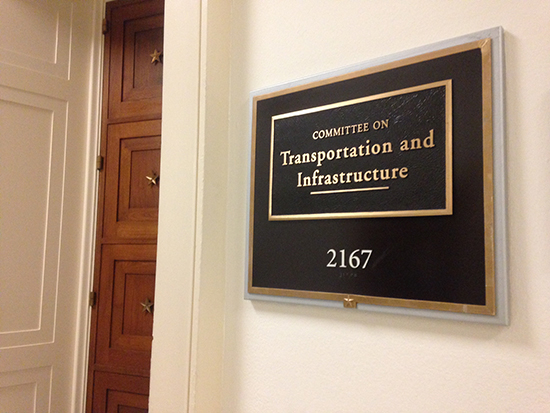
In the hearing, we heard about how public transit, walking and biking can play more significant roles in transportation. Del. Holmes Norton stated that “transit investment is indeed a more critical part than it was” four years ago, recognizing that “we will be depending not only on the usual modes of transportation—transit and automobiles… but we will be looking closely at biking and expediting walking.” Currently, however, only 18 percent of federal funding is dedicated to transit, only 2.5 percent is geared towards highway and motor carrier safety, and a mere 1.5 percent is dedicated specifically to trails, walking and biking.
As Congress considers how it can meet the transportation needs of 21st-century America, RTC encourages them to consider the positive impacts active transportation can have on communities and how connected trail networks and spines are a significant part of the answer.
Networks and Spines
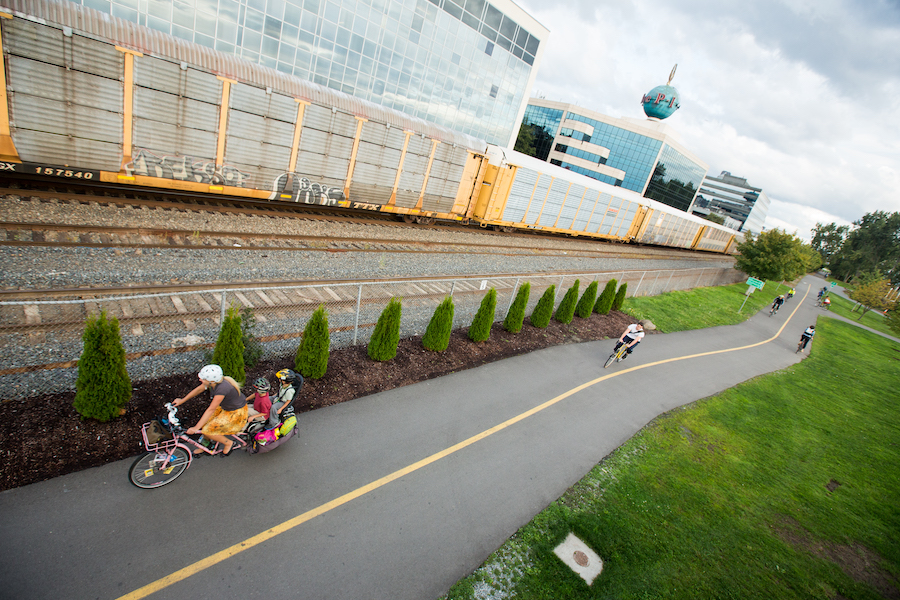
In the past 33 years since RTC was founded, America has made leaps and bounds in the number of trails, protected bike lanes, sidewalks and other walking and biking facilities on the ground in communities across the United States. However, in many places, trails are still only designed and built as recreational assets—where people must drive to trails before experiencing the safe off-road benefits they provide. This is short sighted given that nearly 50 percent of all trips made by Americans are within a 20-minute bike ride, and more than 20 percent of all trips are within a 20-minute walk.
As Americans demand more mobility options for daily travel, it’s imperative that transportation planners, engineers and elected officials begin to think of trails as transportation assets that can change the way people get around, live, work and play.
While trails are present in many communities—they are not always connected, reducing the ability of residents who don’t own vehicles to get from place to place. The goal now is to link these trails into full and complete networks that get people where they need to go.
RTC envisions a future in which every American can walk outside their door, take a sidewalk to a protected bike lane, and use that bike lane to hop on a trail. That trail will take them to work, school, shopping, or to see family and friends.
And what about transportation between cities—or even states?
For that, we also envision spine trails as part of the solution—perhaps best demonstrated by the Great American Rail-Trail, an iconic cross-country project that will one day create a continuous route from Washington, D.C., to Washington State. When complete, the trail will not only serve as an economic boon for small towns along the route—but could be a major step toward a new “interstate” of safe, off-road walking and biking infrastructure, where “off-ramps” connect to community trail networks the same way that that America’s coast-to-coast interstate system connects to local networks of streets.
What’s the Difference Between a Network and a Spine?
Trail and active transportation networks provide connectivity within regions to destinations. Spines provide connectivity between regions and states—the Interstate Highways of trails!
Putting America’s Money Toward America’s Priorities
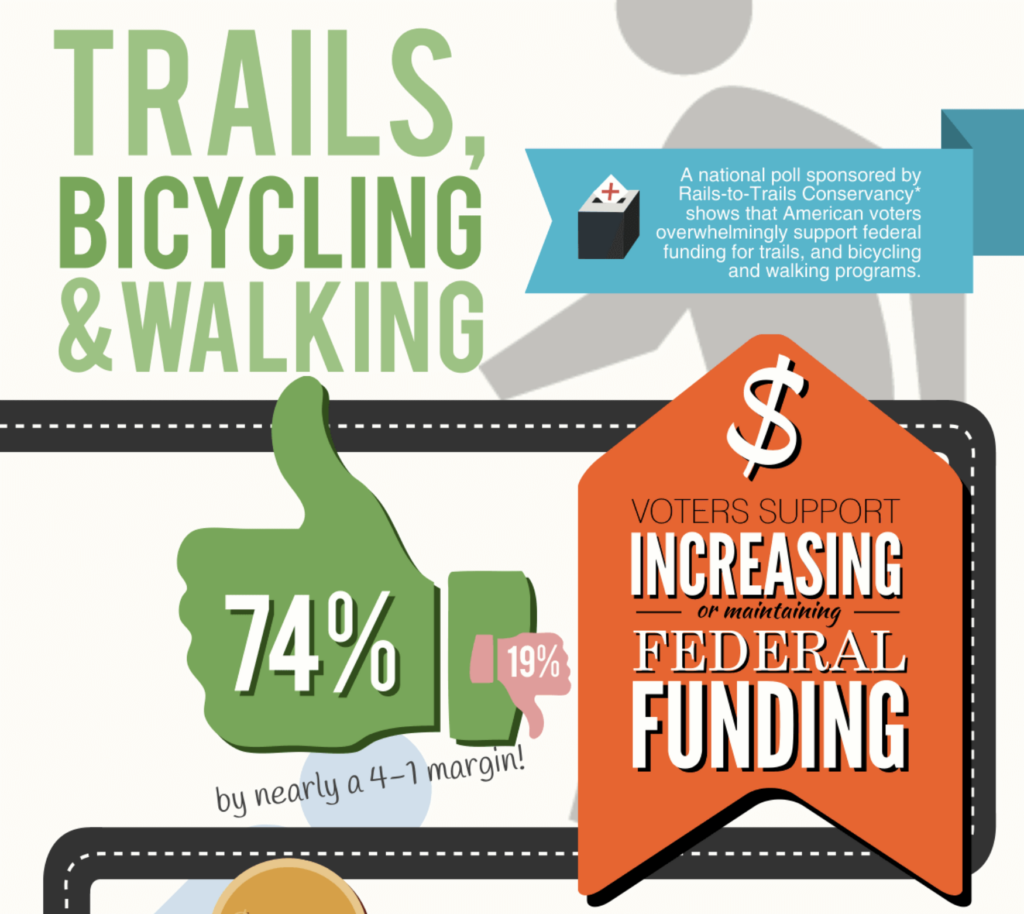
As noted above, the current transportation law heavily favors automobiles. In 2014, the last time RTC fielded a poll, Americans said they wanted to see a balance in funding—with 27 percent going towards walking and biking.
It’s clear that along with funding toward fixing potholes, repairing crumbling bridges and making critical road connections, America must also invest in public transportation, trails and connecting corridors, which—as America becomes more urbanized, and cities experience increased traffic congestion—can move people faster and alleviate traffic woes. Funding a balance of modes will ensure that everyone in a community has access to safe, affordable transportation options.
21st Century Funding for 21st Century Mobility
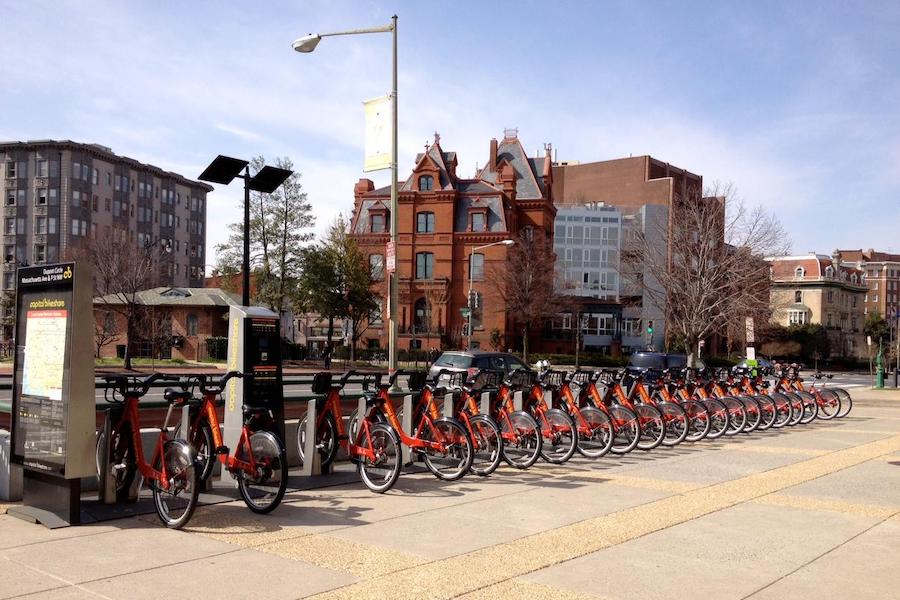
Since 1991, the Transportation Alternatives set-aside and Recreational Trails Program have helped build thousands of trails across the country. However, while they continue to provide critical, dedicated funds to build America’s active transportation infrastructure, their evolution has been hindered over the years, and these programs need some serious tweaks.
For example, the Recreational Trails Program only uses a portion of the revenue initially intended for the program, generated by an off-road recreational vehicle tax. Additionally, Transportation Alternatives receives almost double the number of applications than it can fund each year—at the same time that states are transferring money away from the program. More revenue and a serious policy fix to plug the “leaky bucket” are needed. What’s more, current federal programs do not have sufficient funds or the right structure to address the now-burgeoning demand for trail networks in communities that have trails but now need to connect them.
The current transportation law expires at the end of 2020—but lawmakers in the House of Representatives are already thinking about funding America’s new mobility needs, as seen in yesterday’s hearing.
At RTC, we’ve been in touch with members of Congress in both the House and the Senate, discussing our ideas for fixing the current programs—and investing in new programs that will help communities prioritize walking and biking networks, and spines, as transportation assets. As debates continue and Congress moves closer to introducing bills and writing a new transportation law, we hope you’ll join us in telling your elected officials that trails transform America—and that trail networks and spines deserve robust funding to meet the mobility needs of modern American communities.

Donate
Everyone deserves access to safe ways to walk, bike, and be active outdoors.

